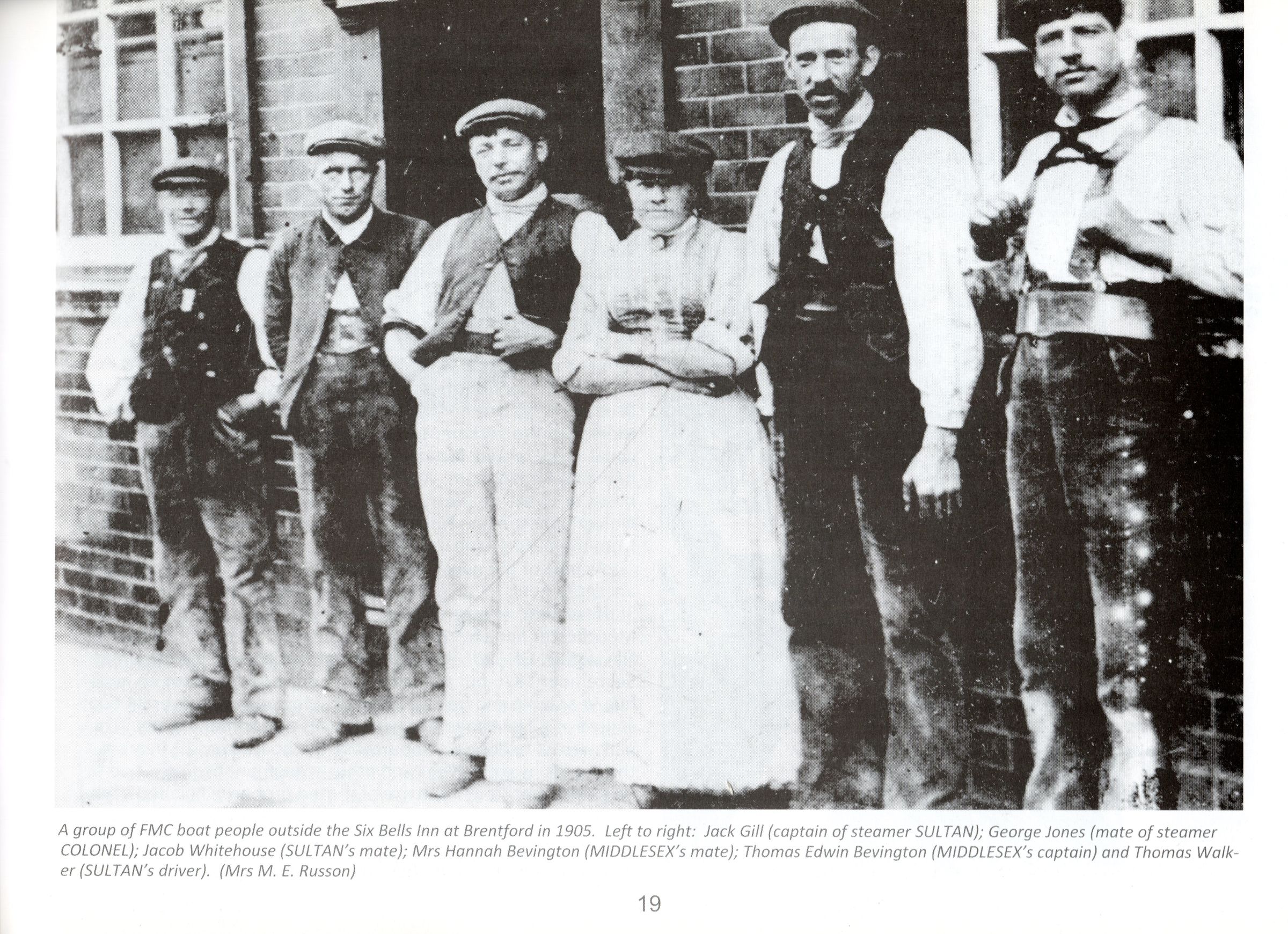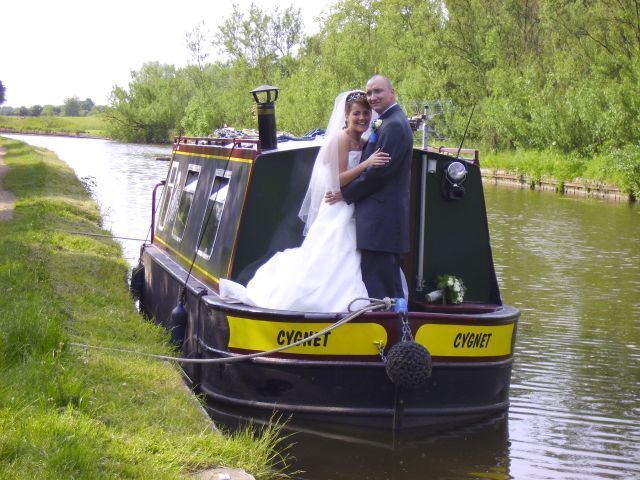-
Posts
5,921 -
Joined
-
Last visited
-
Days Won
19
Content Type
Profiles
Forums
Events
Gallery
Blogs
Store
Posts posted by Mac of Cygnet
-
-
7 minutes ago, Athy said:
I had to search......."complementary"?
Perhaps not. He could then deny he had offered a free bottle, merely that a bottle would enhance the occasion. Or perhaps he wasn't that subtle. I write in the past tense.- is he still around?
-
 1
1
-
-
22 hours ago, Ray T said:
What a fascinating picture. I've noticed it before in photos from the era, but was only doing up the top button of a jacket or waistcoat some sort of fashion? Or was being 'all buttoned up' more formal? And the chap on the right looks as if he's about to break out into some sort of Tyrolean dance.
-
5 hours ago, Tam & Di said:
When Riqueval was first opened the tug had a turntable rather like a children's roundabout, and a couple of tethered horses (donkeys?) provided the power to turn it, rather like a horizontal exercise wheel for a pet dormouse.
Tam
Yes, I was wondering where the power came from in the early days. In my original quote Robert Louis Stevenson implies it was a steam engine that he saw in Belgium. This in the 1870s.
Thanks to Pluto for a REALLY comprehensive run-down of this propulsion method for canal & river transport.
-
3 minutes ago, magpie patrick said:
Historically there were some huge runs, I think most of the Elbe was chain tugs and IIRC correctly they had a blacksmith on board to repair the chain.
Not surprisingly most of these have been made redundant either because the trade has gone or it has become motorised. I understand from IWI that Riqueval is the last, and this it will cease "this year"
Thank you Patrick. By 'motorised' I presume you mean screw-driven. The chain drive would also require a motor, as implied in my quote from RLS. I can see that this may be more efficient than a propeller. Is that so?
-
Chain and cable ferries seem to be widespread, so much so that there is a Code of Practice published 2018 for the construction of new ones.
I was curious to know if any canals used this as a regular method of propulsion. Stevenson doesn't say how long this chain was, but I guess it would extend the length of the regular barge run.
-
I am reading 'An Inland Voyage' by Robert Louis Stevenson, and came across this:
These barges were all tied one behind the other with tow ropes, to the number of twenty-five or thirty; and the line was headed and kept in motion by a steamer of strange construction. It had neither paddle-wheel nor screw; but by some gear not rightly comprehensible to the unmechanical mind, it fetched up over its bow a small bright chain which lay along the bottom of the canal, and paying it out again over the stern, dragged itself forward, link by link, with its whole retinue of loaded skows. Until one had found out the key to the enigma, there was something solemn and uncomfortable in the progress of one of these trains, as it moved gently along the water with nothing to mark its advance but an eddy alongside dying away into the wake.
This on the Willebroek Canal in Belgium in the 1870s. Does anyone know if this method of propulsion was widespread? Is it still used anywhere?
-
This from the Times today:
At the age of 15 Clinton Bowen was dubbed Canal Boat Boy after social services sought to cure him of his criminal instincts by sending him on a holiday on the waterways.
The effort at restorative justice, taken back in 1997, proved divisive and turned Bowen, along with others who received similar treatment, into a tabloid phenomenon. More than two decades on, it has also proven unsuccessful.
Bowen was jailed this week for his part in a £127,000 theft of jewellery and artifacts from Sudeley Castle, where gifts from Edward VII to his mistress Alice Keppel, the Duchess of Cornwall’s great-grandmother, were on display.
I don't remember Canal Boat Boy, but it seems canal boat holidays lead to a criminal career.
-
On 03/10/2020 at 09:39, mrsmelly said:
 Boating season? please explain. We are going out for a while in november and december is that not allowed?
Boating season? please explain. We are going out for a while in november and december is that not allowed?
There is no mention of 'boating season' in that notice. That bee in your bonnet must be getting very annoying.
-
20 hours ago, Biffer said:
. Their website proclaims that they believe marinas "are about people not boats".
Cheers
B
Well that would put me off for a start. I would far rather a marina was concerned with the safety and well-being of my boat.
-
On 07/09/2020 at 13:46, David Mack said:
Some years ago, friends of ours were moored up on the towpath when a model and photographer turned up asking if they could model wedding dresses with her standing in the front well deck.
I think this must happen quite often. This is not a modelling session though, but a real wedding pic. I've no idea who they were.
-
 1
1
-
-
1 hour ago, BlueStringPudding said:
Well, that's a publicly philanthropic technique to try and get his end away and have his dinner cooked. ?
In 6 weeks time, he'll hand her back and ask for one who comes with her own windlass ?
Exactly to whom does this refer, please? ?
-
I have a Carabo. As you say, for some reason it doesn't have stove rope on the door handle side, which means that it is not easily controlled. I got some (I think) 5mm round stove rope and glued it on that side with stove rope glue, giving a pretty good seal as it compresses. You may need to slacken off the door handle (anticlockwise complete turn) to accommodate it at first. It needs re-gluing now and again though, there being no rope channel on that side.
-
-
12 hours ago, howardang said:
I think you misunderstand. I didn't mean that the weather is in turmoil. I meant that in these strange times of turmoil in the world it is good to see that some things like the Eqinuctial Gales are still as reliable as ever.
Howard
Are they? They'd better hurry up then - the equinox is on Monday and our local forecast is 'Sunny intervals and a gentle breeze' ?
-
So where will all this turmoil be? I've just looked at the forecast for this area (Scottish Borders) and there is absolutely no indication of anything untoward.
-
By 'Above Lock' I presume they mean 'on the river'? But Haddlesey basin is a good place to get stuck - a beautiful sheltered little spot and one of my favourite moorings, although there is only one pub now. And buses to Selby within a 10 minute walk.
-
48 minutes ago, ditchcrawler said:
http://www.c20fireplaces.co.uk/parts/baxi-burnall This take air from outside for an open fire. The In Laws had one
Indeed. Taking the air intake for stoves from outside a house is increasingly common practice, but not (yet) mandatory. What the regulations do say is that the room containing the stove must have a certain amount of fixed ventilation, according to the output of the stove. This may involve extra ventilation in modern houses, but not in boats although AFAIU the ventilation recommendations for BSS are advisory only. Perhaps the OP was taking modern stove installation in houses as a guide. But a boat is not a house,
-
Had a tatty old brush taken from my roof at Blisworth. No high value items on the roof except the dog, although I haven't looked at the price of boat poles recently.
-
On 13/09/2020 at 19:59, Rob-M said:
Did you not read the last sentence...?
Since my first trip in 1965 the ones above with asterisks have occurred, some more than once.
Sorry, missed that.
-
5 hours ago, zenataomm said:
It's the same as driving or visiting the seaside, in fact anywhere you may encounter idiots.
Basically anywhere/anytime.
One thing's for sure, my idyll on Thursday three weeks from now was your nightmare two days ago.
Just get out there and get on with it, if you're really going to be worried about things you have no control over perhaps inland boating isn't for you.
When I go distance boating I'm aware I have no control over ........
- Engine breakdown stopping me getting back on time *
- Strangers in front of me having an accident and stopping me from proceeding*
- Strangers behind me having an accident and stopping me from returning
- A tree falling on my boat *
- Fishing matches *
- Returning from shops and finding boat damaged by another boat which hasn't stopped
- My dog getting ill or lost *
- Me getting ill or lost
- Dead body round the prop
- Friend or family phoning me to say major issue back at home *
- Work calling to say "Sorry I know you're on holiday but ...."
- Sinking
- Canal breach
........ I recognise the above isn't exhaustive and there's nowt I can do about any of them. Since my first trip in 1965 the ones above with asterisks have occurred, some more than once.
Do the *s have any significance?
-
Don't be put off by Dave. I understood your post reasonably well, but TBH your questions are far too wide to get someone to attempt to answer.
-
30 minutes ago, Murflynn said:
Bush

Well, both actually. https://www.thespruce.com/vining-and-bush-tomatoes-1835707
-
 1
1
-
 1
1
-
-
The reason to ditch the 'hat' is that tar can condense on the underside of it and drip off outwith the chimney, onto the roof. I wondered why I was getting tar on the roof after fitting an inner skin to the chimney, then actually saw this happening one cold day. It depends what fuel you are burning - more likely with wood which I burn. Try it with the hat on, and if it's OK, then fine.
-
5 minutes ago, Jax59 said:
5kw Sebastopol
Sorry predictive text Webasto
Let's hope the text isn't predictive of the winter temperature!






Made me smile
in General Boating
Posted
For those who missed it, it depicted a cheerful teacher asking a class of children what they would hear if working on a boat. The replies were:
"How the f*** do you expect me to access that?"
"F***! Well, it's in the bilge now."
"Where the f***'s that water coming from?"
"I'm selling this piece of s**t".
I now feel very reassured that my memory hasn't started to go (yet).